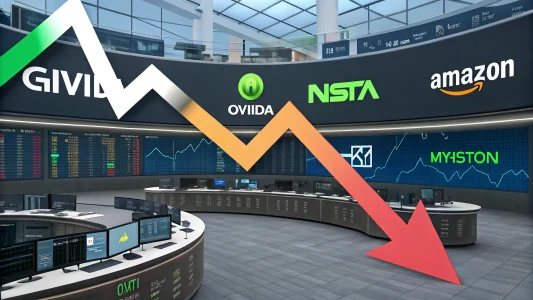Great companies begin with one person’s vision, but it can’t end there.
It’s natural that when you start a company, your values, instincts, and personality influence everything — how decisions are made, how people are treated, and how problems are solved. In other words, you are your culture in those early days.
As the business grows, however, that personal imprint can both be a strength and a liability. When you inspire 10 employees, that energy doesn’t automatically grow to inspire 100. As a result of growth, acquisitions, or time, every founder steps back sooner or later.
In addition, the companies that last are those with a culture that can stand on its own. And the payoff is huge. Gallup found that when employees feel connected to their organization’s culture, they’re 4.3 times more likely to be engaged, 5.3 times more willing to recommend their workplace, 62% less likely to feel burned out, and 47% less likely to look for work.
Here’s how to build a culture that endures — long after the founder moves on.
Table of Contents
Toggle1. Build Principles, Not Personality
Early on, company culture often reflects the founder’s habits. Even if you value speed or transparency, unless those values are embodied in principles that everyone can embrace, they will fade as soon as a new leadership emerges.
My goal when I started Due was to have the team take ownership and move fast. Rather than saying, “Do it like I would,” we built a company-wide ownership principle that encourages everyone to make decisions as if they were their own.
Principles scale, not personalities. As such, integrity, curiosity, and accountability need to be codified so they guide decisions long after you’re gone.
2. Codify Culture Before You Need To
Whether you shape it or not, culture is constantly forming. By the time you have 50 employees, it’s already baked in — for better or worse.
That’s why it’s essential to document your cultural DNA as early as possible. Keep a record of how you make decisions, how you handle conflict, and what success means to you. You don’t need to write a corporate playbook; it could be a “culture memo” that captures your beliefs and stories.
Initially, Netflix’s Culture Deck was a living document of values that evolved along with the organization. It’s all about clarity: show future teams what to do when you aren’t there.
3. Hire for Alignment, Not Just Skill
When it comes to building a strong culture, it starts with who you invite in.
It’s tempting to prioritize technical skills or experience. But hiring someone who doesn’t adhere to the company’s values will slowly undermine the culture. Skills can be taught; alignment can’t.
We implemented culture checkpoints in Due’s hiring process, including questions on ethics, collaboration, and motivation. Although hiring slowed a bit, it ultimately strengthened the team.
When a culture is built on alignment, it becomes self-reinforcing. It’s the right people who keep the values that drew them — and they’re fiercely protective of them too.
4. Empower Leaders to Carry It Forward
When everything runs through you, you cannot build a lasting culture.
As your company grows, your managers will become cultural translators. It is up to them to interpret and embody the values you set. Because of that, leadership development is vital — not just achieving KPIs, but communicating why they matter.
Ask yourself the following question: Would your team still make decisions according to your vision if you disappeared for a month? If not, your culture hasn’t been ingrained deeply enough.
In the end, let people lead with their values and give them the autonomy to demonstrate them.
5. Let Culture Evolve
Some founders preserve their original cultures like museum pieces, clinging to them too firmly. However, strong cultures evolve over time.
Look at Apple. After Steve Jobs’ passing, Apple’s culture shifted toward accessibility and sustainability without losing its core identity.
Evolution should be encouraged. Reevaluate your values every few years and ask yourself, “Is this still who we are? ” Also, allow new leaders to interpret your principles in ways that are appropriate for the times. It’s growth, not dilution.
6. Separate Yourself from the Company
Founders often consider their companies extensions of themselves. Legacy, though, requires letting go.
A culture that requires your approval for every major decision indicates a lack of integration. So, develop self-sufficient systems for the company. Also, be a mentor to your successors, and be ok with things running smoothly without your daily involvement.
Ultimately, you don’t want to be irreplaceable, but relatively unimportant. It’s the only way you know you’ve built something durable.
7. Reinforce Values Through Rituals
Rituals are small, repeatable behaviors that symbolize your values and keep your culture alive.
For example, you could celebrate customer wins at every all-hands meeting. Or, to reinforce transparency, you could host weekly office hours or share failure stories to normalize risk-taking.
Moments like these form identity more powerfully than slogans. Every day, they remind people what the company stands for.
8. Treat Culture as a Legacy Project
At some point, every founder will hand over the reins — either to the next generation, to a CEO, or to an acquirer. When it comes to culture, the best organizations treat it as an asset, not as a source of weakness.
Document your story. Share your values, your lessons learned, and the principles you will never compromise. Once the torch has been passed, mentor the people who will carry it on.
In the end, your legacy is not your title or your balance sheet — it’s how your people treat each other and your customers.
Final Thought
The most enduring competitive advantage of a company is its culture. Even in tough times, it attracts talent, fuels innovation, and keeps people engaged.
So ask yourself: if you stepped away tomorrow, would your culture still thrive?
If the answer is yes, you haven’t just built a business; you have built something that will last a lifetime.
Image Credit: Alena Darmel; Pexels

















